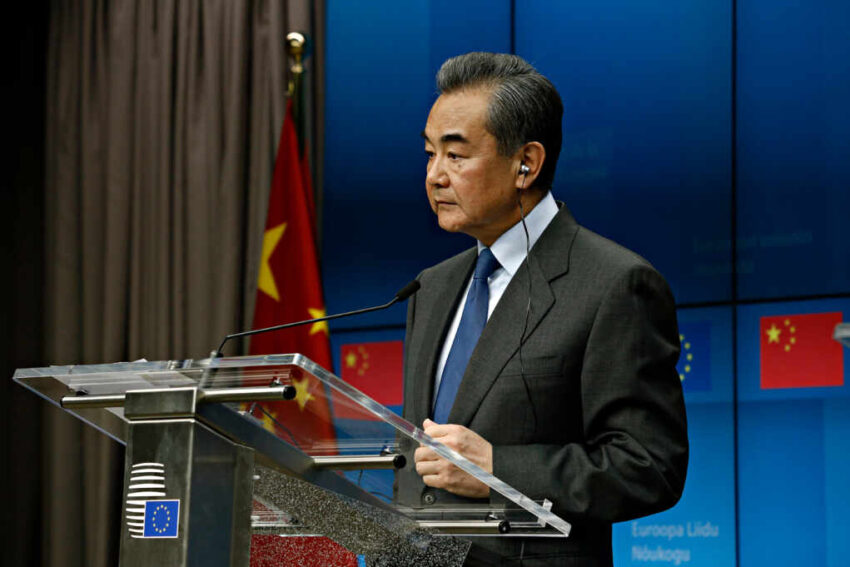China’s Foreign Minister Wang Yi will visit India next week for the first high-level border talks in three years, aiming to reduce tensions that have left thousands of troops deployed along the disputed frontier.
At a Glance
- Wang Yi visits New Delhi August 18–20 for the 24th round of Special Representatives’ Talks
- First senior Chinese diplomatic mission to India since 2022
- Discussions focus on troop disengagement and restoring border status quo ante
- Talks precede Modi’s August 31–September 1 trip to China for the SCO summit
- Mechanism revived after 2020 Galwan Valley clashes froze dialogue
Border Talks Resume
Wang Yi’s trip marks the revival of the Special Representatives mechanism, established in 2003 but largely dormant since the deadly Galwan Valley clashes in June 2020. That incident, which resulted in combat fatalities for the first time in decades, triggered a military buildup on both sides along the 3,488-kilometer Line of Actual Control.
The Chinese foreign minister, also a member of the Politburo, will hold discussions with India’s National Security Adviser Ajit Doval and External Affairs Minister S. Jaishankar. The agenda centers on troop disengagement, confidence-building measures, and potential protocols to reduce future risks of confrontation. India has consistently pressed for the restoration of the status quo ante in eastern Ladakh, while China frames the issue as one part of a broader strategic relationship.
Watch now: Wang Yi to Visit India for Border Talks · YouTube
Although multiple rounds of talks since 2020 have produced limited withdrawals at select friction points, large numbers of troops remain deployed at key positions. Analysts note that disengagement has stalled in critical areas, leaving both sides with entrenched forward positions that carry ongoing risks of escalation.
Strategic Timing
The timing of Wang Yi’s visit is particularly significant. His talks in New Delhi come less than two weeks before Prime Minister Narendra Modi is due in China for the Shanghai Cooperation Organisation summit. The sequencing signals an effort to stabilize relations in advance of Modi’s multilateral engagement on Chinese soil.
Chinese officials have welcomed Modi’s planned participation, stressing a willingness to “cement political mutual trust” and “properly handle differences.” For India, progress on border stabilization remains essential before any broader diplomatic or economic reset. New Delhi has also expressed concerns over a widening trade imbalance in China’s favor, even as overall commerce between the two countries has remained resilient despite political frictions.
For Beijing, reducing tensions with India could limit the risk of New Delhi deepening its alignment with the Quad grouping of the United States, Japan, and Australia. Both governments must balance external strategic goals with domestic political pressures, where strong nationalist views make territorial concessions politically difficult.
Limited Gains, Persistent Risks
Since 2020, the military standoff has had profound regional consequences. Local communities in Ladakh and Arunachal Pradesh report ongoing disruptions to livelihoods and heightened insecurity. The cost of sustaining large military deployments at high altitude has also strained both countries’ defense budgets.
While the Special Representatives mechanism has in the past provided incremental progress, it has never produced a comprehensive settlement of the boundary question. The current talks are expected to be pragmatic rather than transformative, focusing on confidence-building and preventing further deterioration.
Defense observers warn that absent major breakthroughs, both militaries will remain on heightened alert in disputed zones, and the status quo could harden into a semi-permanent deployment pattern. Yet the renewed dialogue, after years of diplomatic freeze, signals a recognition on both sides that prolonged hostility carries unacceptable risks.
Sources
Click this link for the original source of this article.
Author: Editor
This content is courtesy of, and owned and copyrighted by, https://deepstatetribunal.com and its author. This content is made available by use of the public RSS feed offered by the host site and is used for educational purposes only. If you are the author or represent the host site and would like this content removed now and in the future, please contact USSANews.com using the email address in the Contact page found in the website menu.








